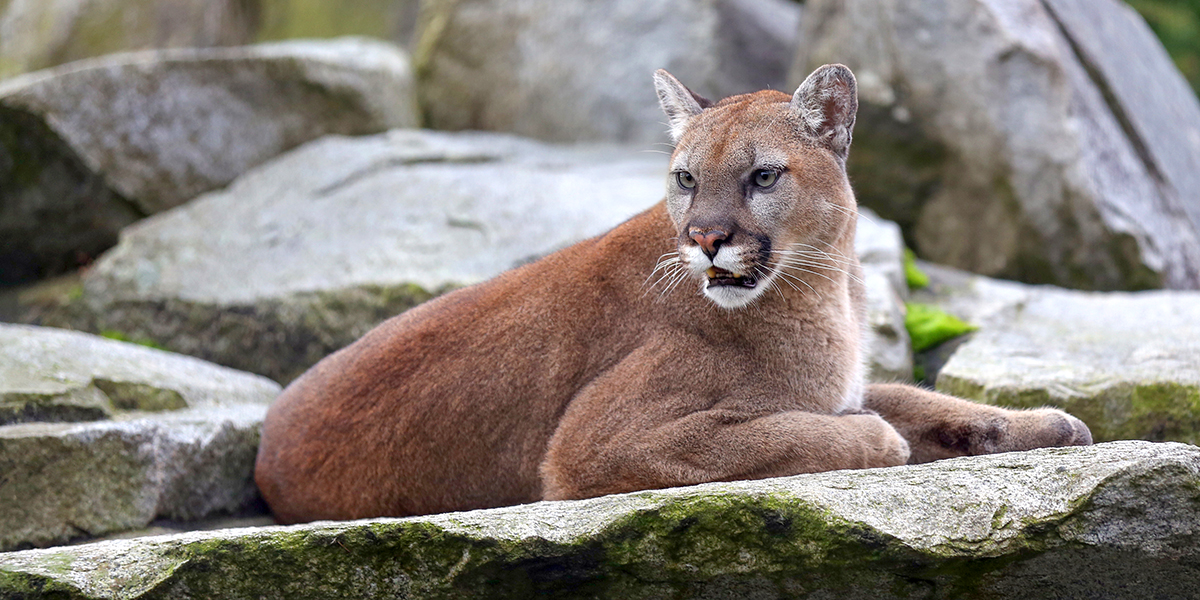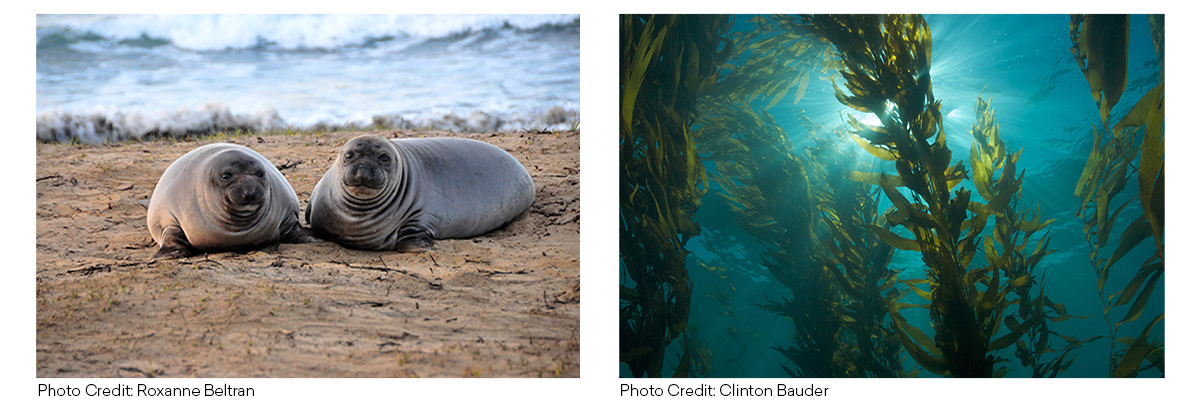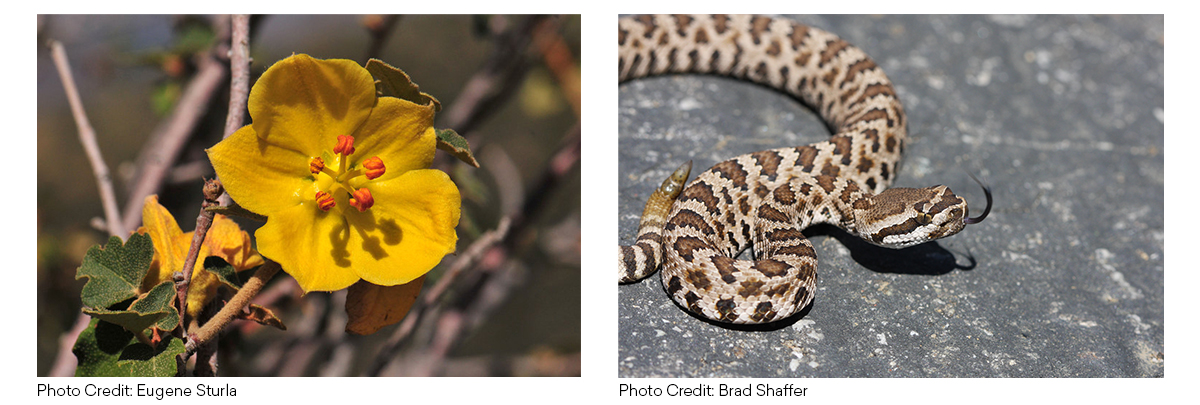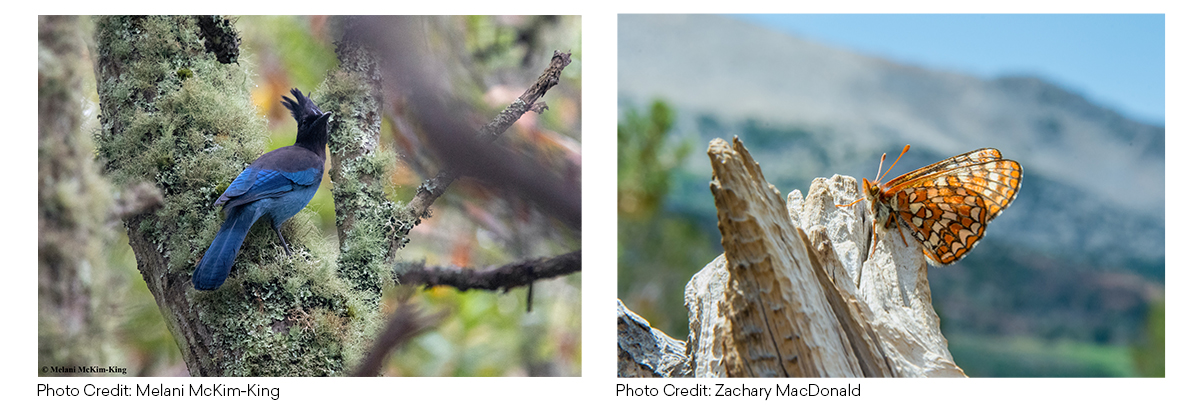
Introduction
There is little doubt that global climate change is altering our ecosystems at an unprecedented rate, threatening plants, animals, and the habitats in which they live. In order to plan future conservation strategies and make informed land management and acquisition decisions, it is critical to understand how species and ecosystems respond under various climate scenarios.
To address this issue, the California Conservation Genomics Project (CCGP) has brought together a consortium of 100+ leading experts who are working at the interface of genomics and conservation science. As a state-funded initiative, CCGP has one goal: “to produce the most comprehensive, multispecies, genomic dataset ever assembled to help manage regional biodiversity.”1 This data will help to inform conservation decisions in the face of rapidly declining species.
Pictured from left to right: Mirounga angustirostris (Northern Elephant Seal) and Macrocystis pyrifera (Giant Kelp).

The CCGP plans to generate, and make publicly available, full genome sequences for approximately 22,000 individual plants, vertebrates and invertebrate animals representing nearly 150 genera and 233 carefully selected species.1
With this data, critical populations and land will be clearly identified, thus helping to prioritize conservation. In addition to providing genomic resources for countless future projects in comparative and landscape genomics, the CCGP’s efforts will provide California policymakers with key resources and strategies.1
Taking a Genomics Approach
Using the latest techniques in genomics, CCGP is building a genomic dataset of nearly 250 species and subspecies, covering the ecoregions and habitats in California. This data will be used to develop a unique genomic map of California that will visualize meaningful genomic variation such as climate resilient hotspots and corridors to connect these hotspots. This information will be used to influence land use management and conservation actions.1
In addition to generating high quality reference genomes, whole genome (re)sequencing of the samples collected will be performed to maximize landscape coverage across the state.
There are three ways CCGP will generate these libraries. Researchers can extract DNA and generate their own libraries, send their samples to UC core facilities to extract DNA and/or generate libraries, or send their samples to the CCGP Mini-Core, who will extract the DNA and/or generate libraries.
Pictured from left to right: Fremontodendron californicum (California Flannelbush) and Crotalus oreganus (Western Rattlesnake).

seqWell’s plexWell Technology Plays Pivotal Role in Sequencing Efforts
As of March 2022, approximately 80% of projects have completed field sampling. The goal is to wrap up data generation by Fall 2022, and to utilize bioinformatics and landscape genomics teams to process and analysis genomic data, which is already ongoing.
CCGP’s Mini-Core is making steady progress towards the goal of completing resequencing of about half of the CCGP landscape samples by Summer 2022. Daniel Oliveira, CCGP’s Mini-Core technician, UC Los Angeles, is halfway through the nearly 4,000 samples that have been submitted for DNA extraction and library preparation, most of which have been sent to the QB3 Genomics core at UC Berkeley for sequencing.2
In addition, CCGP’s collaboration with seqWell has been instrumental to this progress. The plexWell technology is playing a major role in expediting sequencing efforts for the samples that are managed by the CCGP Mini-Core. seqWell’s team has worked with CCGP to create custom kits to expedite and automate library preparation, increasing throughput while reducing the likelihood of errors.
“The key benefits of using plexWell are the timesaving library prep and the easy clean-ups compared to other methods. Being able to create a library in two days allows us to amp up the number of samples we are processing,” says Oliveria.
Most importantly, DNA input requirements are relatively low, making the kits flexible across the breadth of taxonomic groups, sample age, and quality that are inherent in the CCGP.
“We have samples of many different species, such as damselflies, bobcats, and rockfish. The kit is flexible across most species we are working with and with a low input amount which is important for threatened species,” adds Erin Toffelmier, Ph.D., Associate Director, California Conservation Genomics Project, University of California, Los Angeles.
The results of this work will be shared with conservation groups and policy makers to inform conservation. CCGP plans to work with state regulatory agencies, CA 30×30 and NGO community, and to collaborate on the most useful tools to identify landscapes for protection.
Pictured from left to right: Cyanocitta stelleri (Steller’s Jay) and Euphydryas editha (Edith’s Checkerspot Butterfly).

Summary
Climate change is an ever-increasing threat to the world we live in. CCGP is helping California’s conservation efforts in the face of this crisis, in part by generating high quality reference genomes and (re)sequencing genomes of thousands of individuals from 230 species across all the ecoregions in the state. And seqWell’s plexWell technology is helping to simplify the process. With steady progress already being made, soon there will be an abundance of data to make better conservation and land management decisions.
